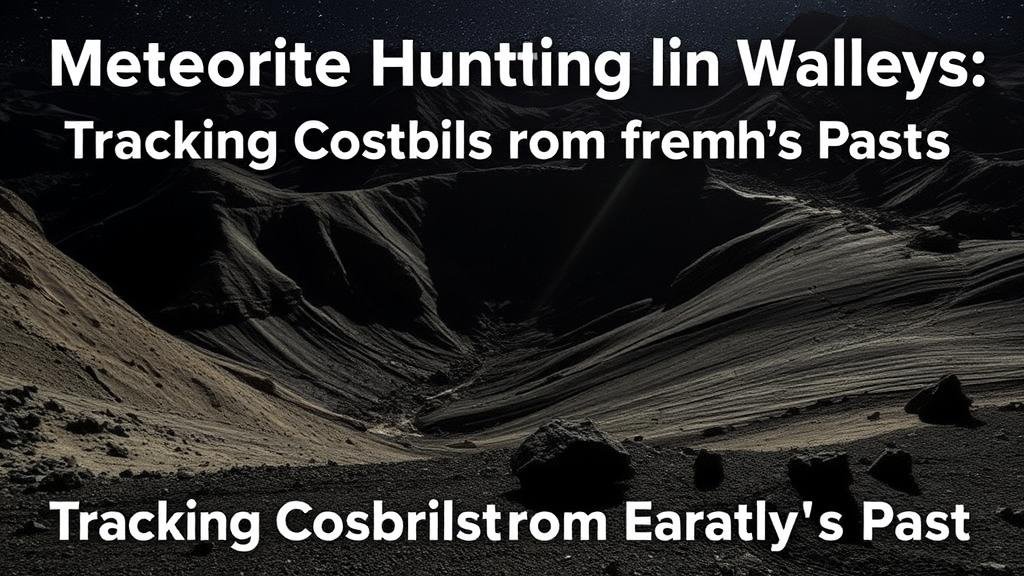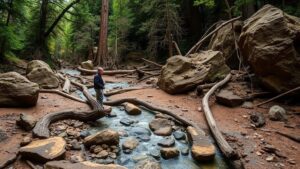Meteorite Hunting in Crater Valleys: Tracking Cosmic Debris from Earth’s Past
Meteorite Hunting in Crater Valleys: Tracking Cosmic Debris from Earth’s Past
Meteorite hunting has captivated rockhounds and mineral collectors worldwide, transforming the act of collecting into a thrilling adventure grounded in scientific inquiry. Crater valleys, formed by past meteorite impacts, serve as rich hunting grounds for those eager to uncover fragments from the cosmos. These natural areas provide a unique window into the geological and cosmic history of our planet. In this article, we will explore the fundamentals of meteorite hunting, key crater locations, and practical tips for aspiring collectors.
Understanding Meteorites and Their Importance
Meteorites are remnants of celestial objects that survive their passage through Earths atmosphere and land on its surface. These fragments can provide invaluable insight into the formation of our solar system, offering clues about the conditions present during its early days. Hundreds of meteorites fall to Earth every day, but only a small fraction – estimated to be around 0.01% – is found and collected. This scarcity enhances their appeal among collectors and scientists alike.
There are three general types of meteorites:
- Stony meteorites: Comprising about 94% of all finds, these consist mostly of silicate minerals.
- Iron meteorites: These account for roughly 5% and primarily consist of metallic iron and nickel.
- Stony-iron meteorites: Making up 1% of meteorites, these contain both silicate minerals and metal.
The Science Behind Crater Valleys
Crater valleys are formed as a result of the explosive impact of meteorites colliding with Earth. The energy resulting from these impacts shapes the landscape, creating depressions in the ground known as impact craters. These craters vary significantly in size and age, with some dating back millions of years. For example, the Barringer Crater in Arizona, also known as Meteor Crater, is about 1,200 meters in diameter and formed around 50,000 years ago.
Studies indicate that meteorite impacts can lead to the formation of specific minerals and structures. For example, shocked quartz and coesite are indicative of extreme pressure, typically found in locations like the Chicxulub Crater, associated with the extinction of the dinosaurs. This geological significance further emphasizes the importance of crater valleys for both scientific exploration and collector interest.
Top Locations for Meteorite Hunting
Some of the worlds best locations for meteorite hunting are crater valleys. Here are a few noteworthy sites:
- Vredefort Crater, South Africa: Recognized as the largest and oldest verified impact structure, it spans over 300 kilometers. This UNESCO World Heritage Site presents numerous mining opportunities.
- Sudbury Basin, Canada: One of the world’s largest impact structures, this area boasts rich mineral deposits and a history of meteorite finds, including the world-famous Sudbury nickel deposits.
- Chesapeake Bay Crater, USA: Formed about 35 million years ago, this underwater structure has yielded various meteorite fragments and is a prime spot for research.
Tools of the Trade: Essentials for Meteorite Hunting
Before setting out on a meteorite hunting expedition, it’s vital to equip yourself with the proper tools. Here is a list of essentials:
- Hand tools: A geologists hammer for chipping rocks, and a pick for digging.
- Metal detector: Useful for locating metal-rich iron meteorites.
- Magnifying glass: For examining samples in detail.
- GPS device: To map locations and mark significant finds.
- Field guide: Reference materials for identification and education.
Practical Tips for Meteorite Collectors
Being successful in meteorite hunting requires more than just the right tools. Here are actionable tips to enhance your hunt:
- Research: Familiarize yourself with the locations you wish to explore. Understand the types of meteorites that are common in those areas.
- Timing: Early morning or after a rain can enhance visibility. Wet ground often reveals meteorites more effectively.
- Observe: Look for unusual shapes or materials that seem out of place, such as metallic objects or rocks with a fusion crust, which often indicates a meteorite.
- Keep records: Document your finds and the locations for future reference, which is especially useful for comparison and study.
- Join communities: Engage with local rockhound groups or online forums to share tips and findings.
Ensuring Ethical Practices
As with any collecting activity, ethical considerations are paramount. Always seek permission before hunting on private land, and adhere to regulations in national parks or protected areas. Collect responsibly to preserve the integrity of meteorite sites for future generations.
Conclusion: The Thrill of the Hunt
Meteorite hunting in crater valleys not only appeals to the adventurous spirit of collectors but also contributes to our understanding of Earths history. By exploring these ancient cosmic fragments, rockhounds can connect with the universe in a unique way. Whether conducting amateur investigations or serious scientific research, the allure of unraveling the mysteries behind meteorites remains an enduring passion.
Remember, the journey of discovering meteorites involves curiosity, patience, and a commitment to preserving Earths cosmic heritage. So gear up, head out to those crater valleys, and embark on an adventure that connects you to the stars.



